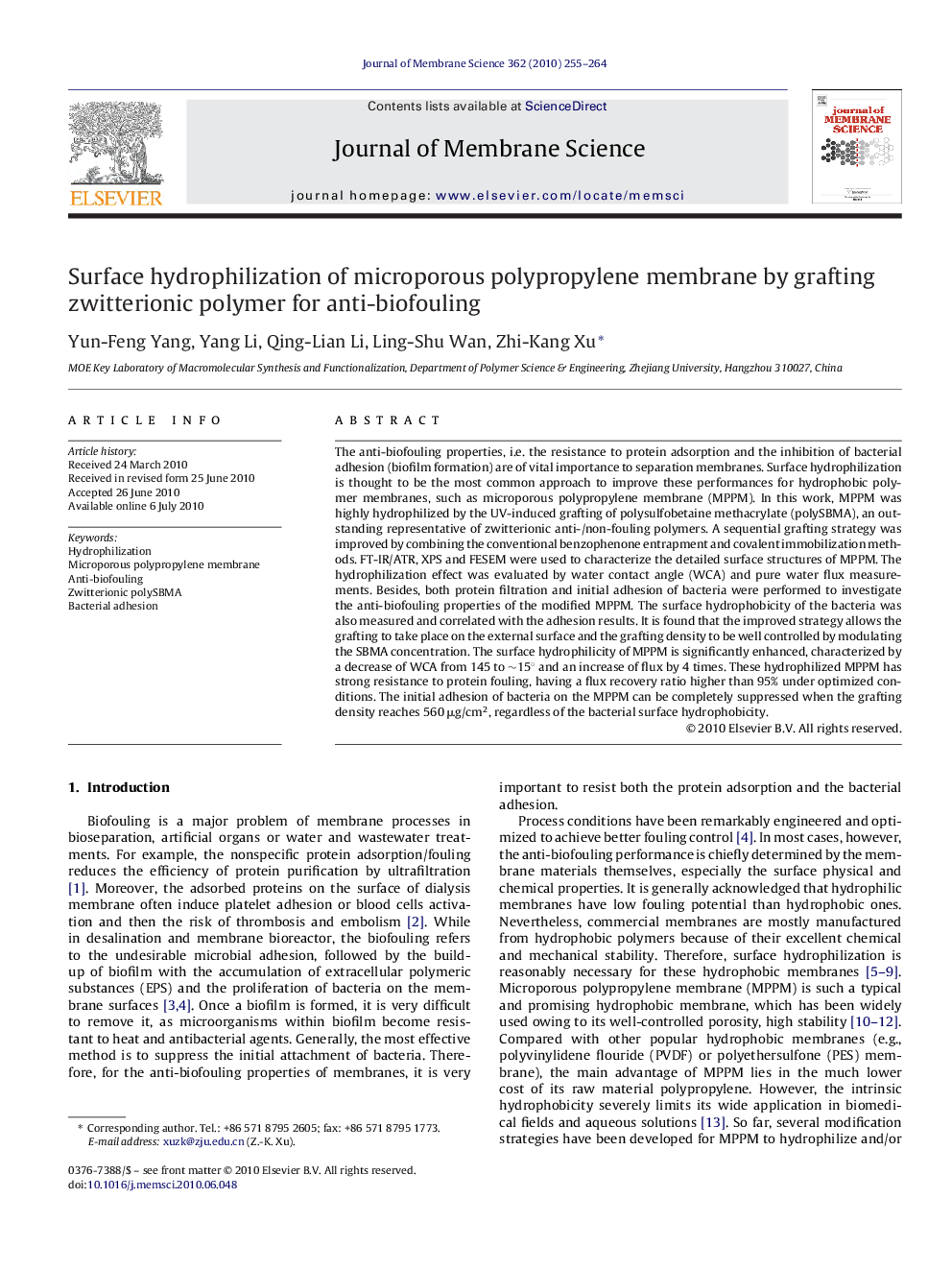| کد مقاله | کد نشریه | سال انتشار | مقاله انگلیسی | نسخه تمام متن |
|---|---|---|---|---|
| 636248 | 1456117 | 2010 | 10 صفحه PDF | دانلود رایگان |

The anti-biofouling properties, i.e. the resistance to protein adsorption and the inhibition of bacterial adhesion (biofilm formation) are of vital importance to separation membranes. Surface hydrophilization is thought to be the most common approach to improve these performances for hydrophobic polymer membranes, such as microporous polypropylene membrane (MPPM). In this work, MPPM was highly hydrophilized by the UV-induced grafting of polysulfobetaine methacrylate (polySBMA), an outstanding representative of zwitterionic anti-/non-fouling polymers. A sequential grafting strategy was improved by combining the conventional benzophenone entrapment and covalent immobilization methods. FT-IR/ATR, XPS and FESEM were used to characterize the detailed surface structures of MPPM. The hydrophilization effect was evaluated by water contact angle (WCA) and pure water flux measurements. Besides, both protein filtration and initial adhesion of bacteria were performed to investigate the anti-biofouling properties of the modified MPPM. The surface hydrophobicity of the bacteria was also measured and correlated with the adhesion results. It is found that the improved strategy allows the grafting to take place on the external surface and the grafting density to be well controlled by modulating the SBMA concentration. The surface hydrophilicity of MPPM is significantly enhanced, characterized by a decrease of WCA from 145 to ∼15° and an increase of flux by 4 times. These hydrophilized MPPM has strong resistance to protein fouling, having a flux recovery ratio higher than 95% under optimized conditions. The initial adhesion of bacteria on the MPPM can be completely suppressed when the grafting density reaches 560 μg/cm2, regardless of the bacterial surface hydrophobicity.
Research highlights▶ A zwitterionic polymer, polysulfobetaine methacrylate (polySBMA), was tethered onto microporous polypropylene membrane (MPPM) by UV-induced grafting. ▶ The grafting of polySBMA significantly enhances the surface hydrophilicity of MPPM. ▶ The hydrophilized MPPM with an appropriate grafting density not only strongly resists protein fouling but also completely suppresses the initial adhesion of bacteria.
Journal: Journal of Membrane Science - Volume 362, Issues 1–2, 15 October 2010, Pages 255–264